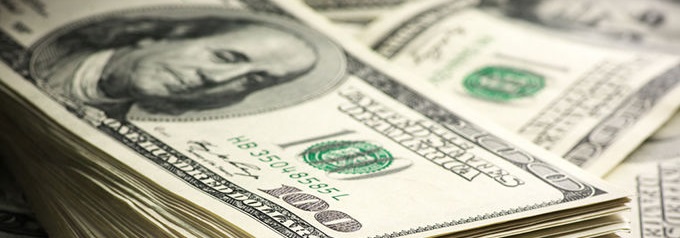Impact of Fed's Interest Rate Hike on the Value of Indonesia's Rupiah
Stock markets in Asia are mixed, yet tepid on Friday (16/12) after the US Federal Reserve raised its interest rate regime for the second time in a decade on Wednesday (14/12). Although the Fed's move was widely anticipated (and therefore already "priced in" to a high degree) it still resulted in some capital outflows from Asia's stock markets on Thursday (13/12). Japan, as usual, is the notable exception as US dollar strength (or yen weakness) makes Japan's export-oriented stocks more attractive.
Although the Fed's 0.25 percent rate hike was widely anticipated, few expected to hear a rather hawkish statement from Janet Yellen who said there may be three more interest rate hikes in 2017 (implying that the Federal Reserve is confident about the strength of the US economy). It also means that after years of ultra-low borrowing costs in the world's largest economy, investors have to start to shift their attention from the loose monetary policy of the Federal Reserve toward real economic growth as driver of the performance of stocks. US economic growth will be in the hands of president-elect Donald Trump (who is to be inaugurated in January 2017). Although there exists a high degree of uncertainty about Trump's future economic and political policies, markets assume that the US economy will get a boost from higher government spending and the more protectionist approach.
Overnight, all three major US benchmarks ended higher, not far from their record highs. The Dow Jones industrial average rose 0.3 percent to 19,852.24, the Standard & Poor's 500 index rose 0.4 percent to 2,262.03, while the Nasdaq composite rose 0.4 percent to 5,456.85 points.

The decision of the Federal Reserve to tighten monetary policy had a bigger impact on currencies than on stocks. The US dollar has shown great strength since the US interest rate hike. On Thursday (15/12) the Indonesian rupiah depreciated 0.68 percent against the USD dollar, while by 14:05 pm local Jakarta time on Friday (16/12), the rupiah had extended its slide by 0.14 percent to IDR 13,403 (Bloomberg Dollar Index).
Meanwhile, Bank Indonesia's Jakarta Interbank Spot Dollar Rate (JISDOR) depreciated 0.44 percent to IDR 13,426 per US dollar on Friday (16/12).
Indonesian Rupiah vs US dollar (JISDOR):
| Source: Bank IndonesiaOn Thursday (15/12) the central bank of Indonesia (Bank Indonesia) left its benchmark interest rate unchanged at the December 2016 policy meeting due to rising pressures on the rupiah stemming from monetary tightening in the USA one day earlier. This decision of Bank Indonesia was also in line with expectations. Further monetary easing in Indonesia is not considered necessary. After all, Bank Indonesia already cut interest rates six times in 2016. At the year-start the key interest rate still stood at 7.50 percent but after six interest rate cuts (and the change from the 12-month BI rate to the 7-day reverse repurchase rate in August) the nation's benchmark interest rate is now set at 4.75 percent.
This rate is expected to boost loan growth further in Indonesia in the period ahead. Loans sold by Indonesia's commercial banks expanded 7.5 percent (y/y) in October 2016, improving from a growth pace of 6.47 percent (y/y) in the preceding month (but far from +20 percent y/y levels that were normal during the commodity boom era).
In response to the Fed Funds Rate hike, Executive Director at the Economic and Monetary Policy Department of Bank Indonesia, Juda Agung, said the rupiah is not expected to depreciate toward the IDR 14,000 level (against the US dollar). The situation in 2016/2017 is very different from the situation in 2013/2014 when - after the Federal Reserve decided to reduce its bond-buying program (QE) - the Indonesian rupiah depreciated more than 20 percent against the US dollar. The differences are that global investors are now not as concerned about the impact of tighter monetary policy compared to the 2013-2014 period (it is not a new phenomenon anymore), while Indonesia's economic fundamentals are now stronger (accelerating economic growth, low inflation, a manageable current account deficit, and higher foreign exchange reserves).
